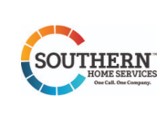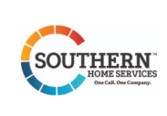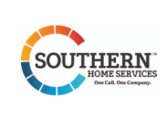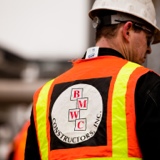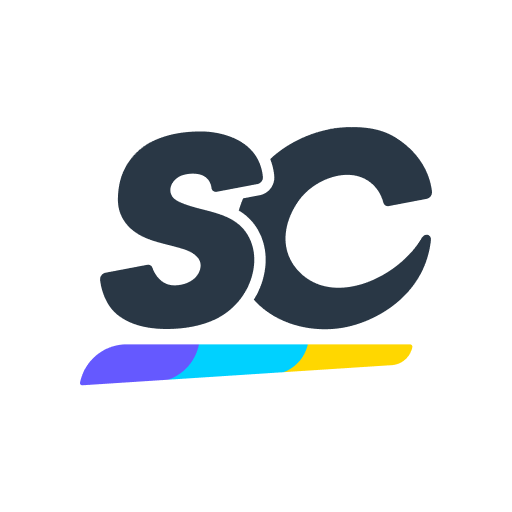Title Page
-
Safety Audit
-
Jobsite:
-
Jobsite Picture:
-
Date of Inspection:
-
Weather (Take Screenshot from Heat Index App)
-
Project Manager:
-
General Superintendent:
-
Project Superintendent:
-
Assistant Superintendent:
-
Audit Performed By:
1. GENERAL SAFETY & HEALTH
-
1.1 Government / All-In-One Posters Up to Date (English & Spanish) (Scan QR Code on Poster to Verify) Order New Ones from Southern Safety
-
1.2 Weekly Safety Meeting Completed (attach a picture of the sign in sheet)
-
1.3 Stretch & Flex Being Done
-
1.4 Pre-Task Plans (Attach Pictures of all PTP's from One Random Day) (PTP's Need to be Double Sided)
-
1.5 First Aid Kit Readily Available and Stocked Properly (attach photo)
-
1.6 One-Site Health & Safety (Medic) Flyer Posted
-
1.7 Urgent Care Map Posted
-
1.8 Nearest Hospital Map Posted
-
1.9 SDS 3-Ring Binder OR DropBox Job Folder Up to Date
-
1.10 Place Designated for Cooling Off
-
1.11 Muster / Rally Point Identified & Communicated to Workers
-
1.12 Green Tape Wrapped Completely Around Hard Hat to Identify a New Hire (Tape is placed towards top)
-
1.13 Red Tape Wrapped Around Hard Hat to identify a Transferred Employee From Another UFI jobsite (Tape is placed towards top)
-
1.14 Orange Tape Wrapped Completely Around Hard Hat to Identify the Crew Foreman (Tape is placed towards bottom)
-
1.15 Yellow Tape Wrapped Completely Around Hard Hat to Identify Carpenters (Tape is placed towards bottom)
-
1.16 Green Tape Wrapped Completely Around Hard Hat to Identify Laborers (Tape is placed towards bottom)
-
1.17 Blue Tape Wrapped Completely Around Hard Hat to Identify Carpenter Helper (Tape is placed towards bottom)
-
1.18 Workers Aware of Earbuds / Cellphone Use Policy (Spot Check one Worker Wearing a Face Covering)
-
1.19 UFI Site Specific Plan Available (attach photo)
-
1.20 OSHA 300 Summary Posted. Can be printed from Safety Information Dropbox (attach photo)
-
1.21 Next Company Safety Meeting at the Groveland Yard - TBD
2. SUPERVISORY TRAINING (UFI SAFETY POLICY PAGE 11)
-
2.1 First Aid & CPR Current for Project Superintendent(s) - Verify Certificate on Dropbox
-
Name(s):
-
2.2 OSHA 10 Hour (4 Year Current) for Project Superintendent(s) - Verify Certificate on Dropbox
-
Name(s):
-
2.3 First Aid & CPR Current for Assistant Superintendent(s) - Verify Certificate on Dropbox
-
Name(s):
-
2.4 OSHA 10 Hour Minimum (4 Year Current) for Assistant Superintendent(s) Verify Certificate on Dropbox
-
Name(s):
-
2.5 First Aid & CPR Current for Site Safety Coordinator(s) Verify Certificate on Dropbox
-
Name(s):
-
2.6 OSHA 10 Hour Minimum (4 Year Current) for Site Safety Coordinator(s) Verify Certificate on Dropbox
-
Name(s):
3. SITE / PUBLIC PROTECTION
-
3.1 Ground Level Barricades with Signs
-
3.2 Orange Netting in Place for Active Deck
-
3.3 Orange Netting in Place on Permanent Guardrail
-
3.4 Traffic Control / Training / Stop Slow Paddle / Hi-Viz Garments
-
3.6 Chemical Drums (55 Gallon) Stored on Pallet and Secured
4. PERSONAL PROTECTIVE EQUIPMENT - INCLUDING SUBCONTRACTORS
-
4.1 Hearing Protection being Used Where Required (Pans / Grinding / Chipping / Blowing off Deck / Tables)
-
4.2 Type 2 Hard Hats Being Worn with Chin Strap Fastened
-
4.3 Clear Glasses being used Inside Building
-
4.4 Respirator Being Used (N-95 or P100)
-
4.4.1 Training on Vacuums, Grinder Shroud, Emptying Bag, Sweeping, Drilling, Chipping with Water
-
4.4.2 Using more than 4 Hours per Day?
-
4.4.3 Worn more than 30 Days Per Year?
-
Medical Clearance Required (Chest X-Ray, OSHA Medical Questionnaire, Lung Capacity Test, TB Test) (Schedule with Tom)
-
4.4.4 Fit Test Current (Required Every 12 months. Verify Certificate on Dropbox)
-
4.5 Full Body Harness Worn Correctly (Leg Straps in Rubber Band Keeper)
-
4.6 Retractable Lifelines Removed from Service if Defective
-
4.7 Hand Protection - Task and General Contractor Specific
-
4.8 Face Shields being Used While Blowing off Deck
-
4.9 Foot Protection (Sturdy work boots, cover heal) (General Contractor Specific)
-
4.10 Employees Aware of Metal Inserts for Boots
-
4.11 Proper Clothing, Hi-Viz Vests or Shirt (General Contractor Specific)
-
4.12 Eye-Wash Station Available for Current & Future Concrete Pours
5. CONCRETE CONSTRUCTION
-
5.1 Post Tension Cable Pulling Operations Protected with Barricades & Signs
-
5.2 Impalement Protection In Place
-
5.3 Two Week Look Ahead for Elevation Changes for Upcoming Slabs: Verify Proper Equipment such as Ladders, Stripping Bars, Concrete Tie Off Straps, Styrofoam for Tables, Table Leg Adjustment, Etc...)
-
5.4 Chemical Contents Clearly Labeled as to Contents / Form Oil / Diesel / Gasoline / Curing Compound
6. HOUSEKEEPING
-
6.1 Work Space Clean & Free From Excess Trash / Nails / Debris from Cutting Wood / Banding
-
6.2 Materials Stored and Stacked on Firm Foundation at Least 10 Feet from Edge of Slab
-
6.3 Garbage Receptacle Outside Office / Emptied at Regular Intervals?
-
6.4 Water Kegs / Sanitary / Cups / Trash Receptacle
-
6.5 Task Lighting / Daylight / Night Time Pours Walkways & Ladders
7. LADDERS & STAIRWAYS
-
STEP LADDER BEING USED
-
7.1 Labels in Place and Readable
-
7.2 Anti-Slip Rubber Feet Not Worn, Torn or Missing
-
7.3 Areas Around Top & Bottom of Ladder Clear
-
7.4 Side Rails Not Split or Broken
-
7.5 Steps Clean, Free of all Oil, Grease, Dirt, Paint, Not Bent, Connections all Tight
-
7.6 Ladders Being Used on Stable & Level Surface
-
7.7 Can the Job be Done Without Using the Top Step of a Ladder
-
7.8 Used Correctly (Opened with Spreaders Locked Securely)
-
7.9 Does the Ladder's Length Allow to Safely Reach the Work Area
-
EXTENSION or STRAIT LADDERS BEING USED
-
7.10 Labels in Place and Readable
-
7.11 Anti-Slip Rubber Feet Not Worn, Torn or Missing
-
7.12 Areas Around Top & Bottom of Ladder Clear
-
7.13 Side Rails Not Split or Broken
-
7.14 Steps Clean, Free of all Oil, Grease, Dirt, Paint, Not Bent, Connections all Tight
-
7.15 Ladders Being Used on Stable & Level Surface
-
7.16 Is the Ladder able to use the 4-1 Rule? And Does it Extend at Least Three Feet Above the Landing
-
7.17 Extension Ladder Sections not Separated
-
7.18 Secured / Walk-Thru Grab Bars (temporary deck access only)
-
7.19 Does the Ladder's Length Allow to Safely Reach the Work Area
-
7.20 Locks Functional, Flippers in Place and Clear of Debris
-
7.21 Rope Connected to Fly Section of the Ladder and not Worn, Torn or Frayed
-
PODIUM or PLATFORM LADDERS BEING USED
-
PODIUM (Has a wider work platform (20") than a platform ladder (15") and extend 3 feet above the height of the platform)
-
7.22 Labels in Place and Readable
-
7.23 Anti-Slip Rubber Feet Not Worn, Torn or Missing
-
7.24 Areas Around Top & Bottom of Ladder Clear
-
7.25 Side Rails Not Split or Broken
-
7.26 Gate Attachment Properly Assembled & Used (Podium Only)
-
7.27 Steps Clean, Free of all Oil, Grease, Dirt, Paint, Not Bent, Connections all Tight
-
7.28 Ladders Being Used on Stable & Level Surface
-
7.29 Used Correctly (Opened with Spreaders Locked Securely)
-
7.30 More Than One Single Ladder OR One Double Gang (Two Way) Ladder for 25 or more People on any Level
- Pass
- Fail
- Fail But Corrected
- Not Applicable
-
7.31 Safe Access to Dumpsters / Flatbed Trucks / Concrete Buckets
-
STAIRS BEING USED
-
7.30 Stairways Equipped with Handrails Installed Between 30-37"
-
7.31 Metal Pan Stairs Filled with Wood or Concrete
-
7.32 Stair Landings Lighted with Clear and Clean Access
-
7.33 Scaffold Safety Awareness for Stair Towers
8. FALL PROTECTION
-
8.1 Adequate Temporary Guardrails Installed Properly
-
8.2 Adequate Permanent Guardrails Installed Properly / Wood & Cable
-
8.4 In Addition to Guardrails, Elevator Shaft Cover Installed & Maintained Such that any UFI Worker will not Fall more than 25 Feet
-
8.6 Holes 2 Inches or Wider Covered / Secured / Labeled
-
8.7 Hand Rails Installed Properly up to Leading Edge Barricades
-
8.8 Horizontal Lifelines Installed Properly
-
8.9 Concrete Anchor Straps Ordered and of Proper Length
9. SIGNS, SIGNALS & BARRICADES
-
9.1 Stripping Signs Posted with area Barricaded
-
9.2 Fall Hazard Areas Barricaded Properly with Signage
-
9.3 Lower Level Controlled Access Zone Set up Properly During Stripping Process
10. TOOLS & EQUIPMENT
-
10.1 Broken Tools Removed from Service / Tagged Out
-
10.2 Hand Tools Observed in Good Shape
-
10.3 Air Compressor Being Used
-
10.4 Shut Off Valve on Blow Pipe
-
10.5 Condition of Hoses
-
10.6 Whip Checks in Place to Prevent Accidental Disconnect
-
10.7 Is Compressor Being Used to Chip Pile Caps
-
10.8 Faceshields Being Used
-
10.9 Employees Aware of Hazards
-
10.10 Excavation Training Completed
-
10.11 Electrical Cords are in Good Repair, without Damage to the Outer Jacket Insulation, Plugs, or Pins
-
10.12 Hammer Head in Good Shape with no Grinder Cuts
-
10.13 Side Handles & Guards In Place on Grinders and Drills
-
10.14 Saw Horse Being Used / Top Plate Inspected for Proper Blade Adjustment
-
10.15 Name of Employee Questioned About the Morning's Pre-Task Meeting - Emphasis on Small Tools
-
10.16 Was the Answer Satisfactory
11. SHORES, RESHORES, STRIPPING & STRIPPING NETS
-
11.1 Perimeter Lacing Installed on all Unsecured Shores to Prevent Accidentally Falling Out of Place
-
11.2 Stripping Nets in Good Shape / On Site (order when 1st level framing material is shipped from the yard)
-
11.3 Shoring Scaffolding with a Height to Base Ratio Greater than 4 to 1 is Restrained from Tipping by Guy Wires, Bracing or Equivalent Means
12. FIRE PROTECTION
-
12.1 Diesel Tank Being Used for Heavy Equipment
-
12.2 Properly Barricaded from Construction Traffic
-
12.3 No Smoking Sign Posted
-
12.4 Fire Extinguisher (20#) no Further than 75 Feet, Mounted on Sign Stand with Red Flag / Properly Charged
-
12.5 Bonding Strap Available for Transferring Diesel
-
(Transfer of Category 1, 2, or 3 flammable liquids from one container to another shall be done only when containers are electrically interconnected (bonded).
-
12.6 Tank Inside a Bath Tub (required by Skanska and Turner)
-
12.7 Generators Being Used
-
Gilbane and Turner Require 20# Fire Extinguishers for all Operations
-
12.8 Fire Extinguisher (10#) Easily Accessible with Red Flag / Certification Current / Properly Charged
-
12.9 Employees Aware of Shut Down and Refueling Procedure (shut off during breaks, then refuel once break is over)
-
12.10 Proper Funnel being used to Re-Fuel
-
12.11 Placed on Firm and well Ventilated Area
-
12.12 Is the Generator Located on Dirt
-
12.13 Plywood Under Generator (Keeps Contamination of Fluids from Leaking into Ground)
-
12.14 Flammable Storage Tank Used for More Than 25 Gallons of Fuel
-
12.15 Is There a Chopsaw Being Used
-
12.16 Fire Extinguisher (10#) Easily Accessible with Red Flag / Certification Current / Properly Charged
-
12.17 Is There a Torch Set Being Used
-
12.18 Fire Extinguisher (10#) Easily Accessible with Red Flag / Certification Current / Properly Charged
-
12.19 Torch Set / Gauges / Flash Back Arrestors / Hose Condition /
-
12.20 Oxygen & Acetylene Tanks Properly Stored
13. SHORING SCAFFOLD
-
13.1 OSHA Planks Being Used
14. EXCAVATIONS
-
Excavation Work Being Done
-
14.1 Daily Inspections Completed
-
14.2 Heavy Equipment Inspections Completed with Qualified Operator & Evaluation
-
14.3 Excavation Training Completed for Workers
15. CRANE, RIGGING & LIFTING EQUIPMENT
-
15.1 Crane Being Used
-
15.2 Mobile Crane Swing Radius Barricaded
-
15.3 Crane Radius Plan Available
-
15.4 Tag Lines of Proper Length for Specific Tasks
-
15.5 Nylon Straps Condition (red yarn, legible ID Tag)?
-
15.6 Port-A-John with Proper Rigging Being Utilized
-
15.7 Qualified Crane Signal Person/Rigger Identified with Orange Brim Guard
-
15.8 Concrete Column Bucket (wire rope, tag legible, shackle cotter pin)
-
15.9 Chain Sling condition (tag in place and legible, hooks)?
-
15.10 Skip Pan / Wire Rope / Shackles / Weight Limits Legible
-
15.11 Tag on Wire Rope Concrete Deadman
-
15.12 Heavy Equipment Operator with Equipment Evaluation Completed (Verify on Dropbox)
-
15.13 Forklift Operator with Approved Training and Equipment Evaluation Completed (Verify on Dropbox)
16. OUTRIGGER
-
Is Outrigger Being Used
-
16.1 Guardrail systems are in place and at proper height?
-
16.2 Plywood Installed on Both Sides at Landing Area - Top to Bottom
-
16.3 Double 2x4 In Place at the End of Outrigger?
-
16.4 Tie off Anchors Identified and in Place?
-
16.5 Orange Cones and Cone Bars in Place Around Entrance of Outrigger?
-
16.6 Shackle Pins Fixed from Rotation?
-
16.7 Fall Protection Required Beyond this Point Sign in Place at Entry?
-
16.8 Blue Notice Sign 5,000 Pound Cart Load in Place?
EMAIL AUDIT TO THE FOLLOWING:
-
Project Manager, General Sup't, Project Sup't and copy Todd Volheim, Bill Nagele, Heman Higgins, Tom Isola






